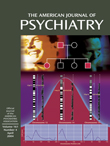Seizures and Prolonged QTc With Atomoxetine Overdose
Adam was a 15-year-old Caucasian adolescent who weighed 54 kg and had a history of major depression and ADHD. He was brought to the emergency department after an intentional overdose of atomoxetine. There was no past history of seizures, head injury, medical illness, or substance abuse. His medications included 150 mg b.i.d. of sustained-release buproprion, 0.25 mg b.i.d. of risperidone, 0.25 mg of alprazolam as needed, and 80 mg/day of atomoxetine. He had been taking bupropion for the past 1 years and risperidone for the past 7 months. Two months before we saw him, he was switched from amphetamine to atomoxetine, 60 mg/day. Two weeks before we saw him, his atomoxetine dose was increased to 80 mg/day, and his bupropion dose was decreased to 150 mg b.i.d. because of continued ADHD symptoms. Soon after this change, however, he relapsed into severe depression.Adam ingested 1200 mg (22 mg/kg) of atomoxetine about 1 hours before coming to the emergency department. Pill counts confirmed that this was the only drug involved. He was treated with intravenous fluids and charcoal. About 3 hours after ingestion, he had a witnessed generalized seizure with postictal confusion that spontaneously resolved. He had a second generalized seizure 2 hours later that was treated with two doses of intravenous diazepam, 5 mg, and a loading dose of phenytoin. He was transferred to the medical intensive care unit for observation. The Poison Control Center had no specific recommendations.Adam complained of anxiety, tremulousness, and dry mouth during the first few hours. A physical examination showed an alert, oriented, anxious, and afebrile patient with a pulse in the 110s and a stable systolic blood pressure in the low 100s, with equal and reactive pupils and fine motor tremors. A neurological examination produced nonfocal results. Routine blood tests produced normal results. The results of a urine toxicology screen and tests for alcohol, acetaminophen, and salicylate were negative. His QTc interval was 607 msec at 3 hours and 435 msec at 6 hours after ingestion. Adam was discharged 2 days later to an inpatient psychiatric facility.
References
Information & Authors
Information
Published In
History
Authors
Metrics & Citations
Metrics
Citations
Export Citations
If you have the appropriate software installed, you can download article citation data to the citation manager of your choice. Simply select your manager software from the list below and click Download.
For more information or tips please see 'Downloading to a citation manager' in the Help menu.
View Options
View options
PDF/EPUB
View PDF/EPUBGet Access
Login options
Already a subscriber? Access your subscription through your login credentials or your institution for full access to this article.
Personal login Institutional Login Open Athens loginNot a subscriber?
PsychiatryOnline subscription options offer access to the DSM-5-TR® library, books, journals, CME, and patient resources. This all-in-one virtual library provides psychiatrists and mental health professionals with key resources for diagnosis, treatment, research, and professional development.
Need more help? PsychiatryOnline Customer Service may be reached by emailing [email protected] or by calling 800-368-5777 (in the U.S.) or 703-907-7322 (outside the U.S.).

